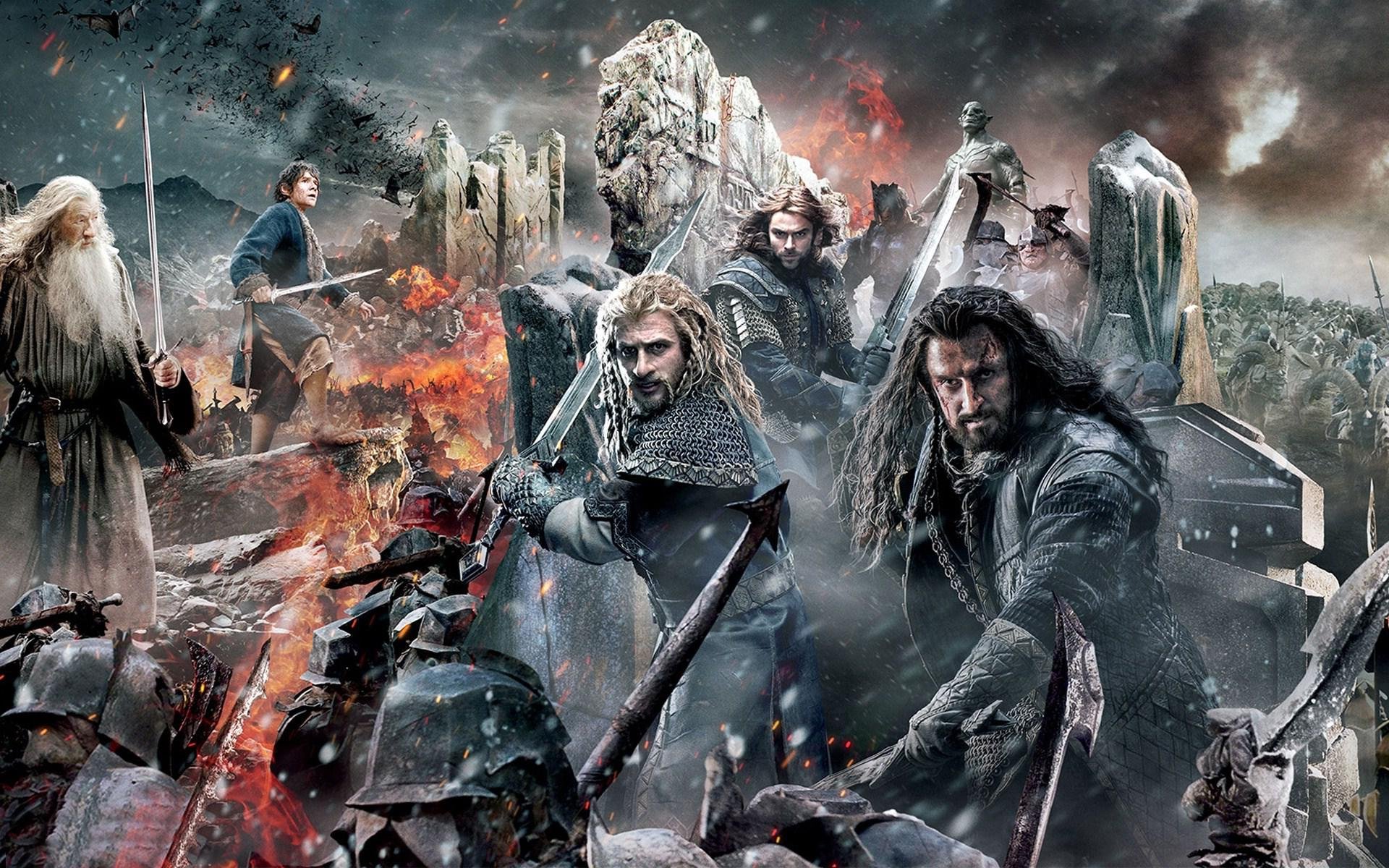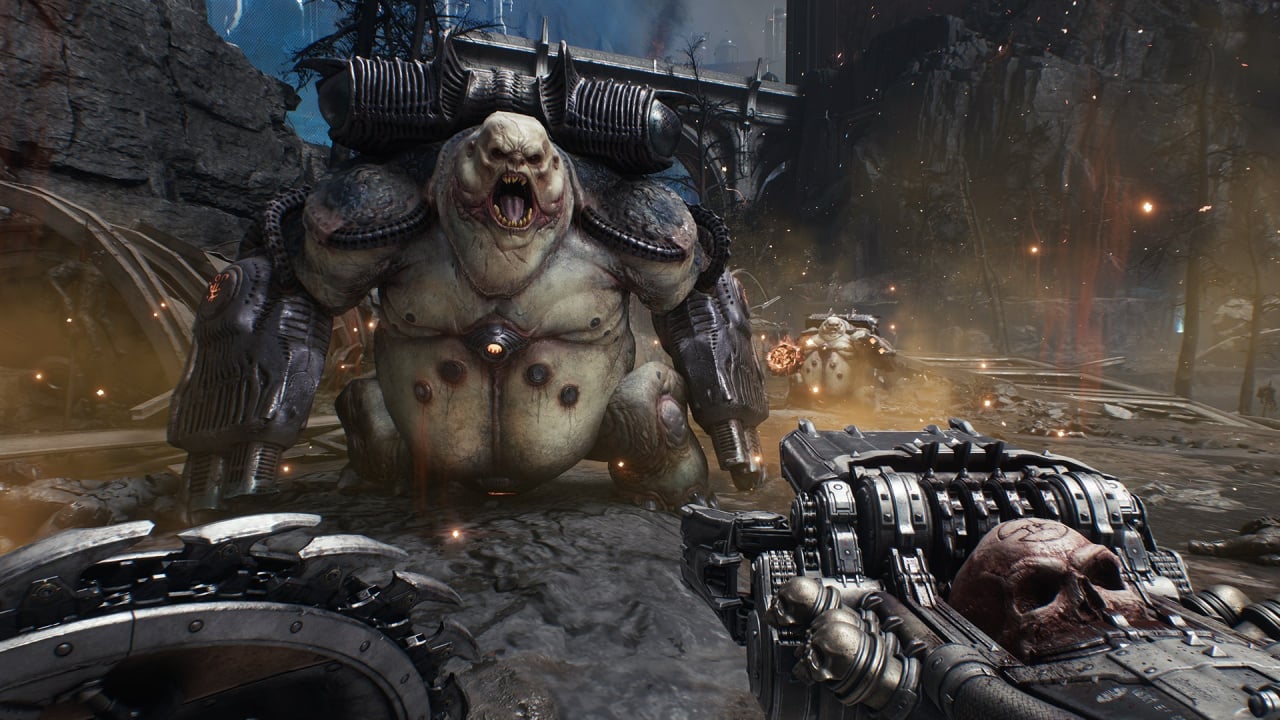The Battle Of The Five Armies In The Hobbit: A Deeper Look At The Conflict

Table of Contents
The Origins of the Conflict: Seeds of War in Erebor
The Battle of Five Armies wasn't a spontaneous eruption; it was the culmination of a series of events, primarily stemming from the initial conflict.
Smaug's Attack and the Consequences:
Smaug's devastating attack on Lake-town and Erebor served as the undeniable catalyst for the larger conflict. His reign of terror, fueled by greed and an insatiable desire for gold, left a trail of destruction and displaced thousands.
- Destruction of Lake-town: The dragon's fiery breath reduced the once-prosperous town to ashes, leaving its inhabitants homeless and desperate.
- Displacement of refugees: The survivors of Lake-town, along with the dwarves who had been driven from their ancestral home in Erebor for centuries, were scattered and vulnerable.
- Thorin's obsession with reclaiming Erebor: Thorin Oakenshield's relentless pursuit of reclaiming Erebor, fueled by pride and a desire for vengeance, blinded him to the potential for wider conflict.
- The dragon's death and its unforeseen repercussions: While Smaug's death by Bard the Bowman seemed a victory, it unleashed a chain of events that ultimately led to the far greater Battle of Five Armies. The removal of the dragon's oppressive rule inadvertently triggered a far larger war.
The Wargs and Goblins: Unexpected Allies:
The alliance between the wargs and goblins, under the command of the cunning Bolg, proved to be a significant factor in escalating the conflict. This unexpected alliance amplified the threat exponentially.
- Bolg's ambition: Bolg's ambition to conquer and plunder, coupled with his strategic brilliance, made the combined warg and goblin forces a formidable threat.
- The strategic advantage of the combined forces: The wargs provided mobility and ferocity, while the sheer number of goblins overwhelmed the dwarves and their allies.
- Their role in escalating the conflict beyond a simple battle for Erebor: The goblin and warg army transformed the conflict from a simple struggle for Erebor into a much larger, more devastating battle, involving several factions across Middle-earth.
The Five Armies: A Detailed Look at the Combatants
The Battle of Five Armies involved a complex array of combatants, each with their own motivations and strengths.
Thorin's Company and their Allies:
Thorin's Company of dwarves, though outnumbered, fought with unmatched courage and determination. Their alliance with the Men of Lake-town and the Elves of Mirkwood proved crucial.
- Thorin's leadership: While ultimately flawed by his obsession with gold and growing paranoia, Thorin's leadership initially inspired his company.
- The bravery of the dwarves: The dwarves demonstrated incredible resilience and fighting prowess, holding their ground against overwhelming odds.
- Bilbo's unexpected contributions: Bilbo Baggins, though initially reluctant, played a vital role, both strategically and through his unexpected bravery.
- The strategic importance of the Elven and human alliances: The combined strength of the Elves and Men provided the dwarves with much-needed support, turning the tide of the battle.
The Wargs and Goblins: A Horde of Savage Warriors:
Bolg's army of wargs and goblins represented a terrifying and relentless force, fueled by savagery and a lust for conquest.
- Bolg's leadership style: Bolg's ruthless efficiency and tactical acumen made him a dangerous opponent.
- The savagery of the wargs: The wargs, with their ferocity and speed, struck fear into the hearts of the opposing armies.
- The numerical superiority of the goblin hordes: The sheer number of goblins overwhelmed the dwarves' defensive lines.
The Eagles: Unexpected Intervention and its Significance:
The unexpected arrival of the Eagles, summoned by Gandalf, proved to be a pivotal moment in the battle, turning the tide in favor of the dwarves and their allies.
- Gandalf's summons: Gandalf's foresight and ability to call upon unexpected aid demonstrated his wisdom and strategic thinking.
- The Eagles' strategic intervention: The Eagles' aerial assault targeted the vulnerable goblin and warg forces, causing significant disruption and casualties.
- The symbolic representation of hope and unexpected aid: The Eagles' arrival symbolized hope and the power of unexpected alliances in the face of seemingly insurmountable odds.
The Elves of Mirkwood and the Men of Lake-town:
The Elves, led by Legolas, and the Men of Lake-town, led by Bard, fought alongside the dwarves, united by a shared enemy and a desire to protect their homes.
- Legolas’s prowess: Legolas’s exceptional archery skills and tactical awareness proved invaluable.
- Bard's archery skills: Bard's skill with the bow and arrow, already proven by his slaying of Smaug, once again played a crucial role in the battle's outcome.
- Their shared desire to protect their homes and people from the goblin menace: This shared purpose forged an alliance that proved crucial in overcoming the combined goblin and warg forces.
Strategic Analysis of the Battle: Tactical Maneuvers and Key Moments
The Battle of Five Armies was a complex strategic engagement, marked by several pivotal moments that dictated the ultimate outcome.
The Battle's Key Turning Points:
Several key moments drastically shifted the balance of power during the Battle of Five Armies.
- The death of Bolg: Bolg's death, though initially seemingly inconsequential, disrupted the goblin and warg army's command structure, leading to disarray.
- The arrival of the Eagles: The Eagles' arrival drastically shifted the battlefield's dynamic, turning what seemed like an inevitable defeat into a hard-fought victory.
- Thorin's fatal injuries: While Thorin’s death was tragic, it inadvertently allowed for a more unified defense and acceptance of peace amongst the surviving parties.
Leadership and Strategy:
The leadership displayed by the various commanders played a crucial role in shaping the battle's course.
- Thorin's leadership: While initially effective, Thorin's leadership became increasingly reckless due to his obsession with gold and paranoia.
- Gandalf's strategy: Gandalf's strategic vision and ability to unite disparate factions proved invaluable in securing victory.
- Bard's tactical acumen: Bard's marksmanship and tactical decisions played an undeniably crucial role in shaping the battle's trajectory.
- Bolg's tactical skills: Bolg's tactical proficiency and ruthless command almost led to victory for his goblin and warg hordes.
Consequences and Aftermath: The Battle’s Legacy
The Battle of Five Armies had profound and lasting consequences, profoundly impacting the political landscape of Middle-earth.
The Fate of the Key Characters:
The battle claimed the lives of several key characters, altering the course of events.
- Thorin's death: Thorin's death marked the end of an era, bringing a sense of closure to his long quest for reclaiming Erebor.
- Bilbo's survival: Bilbo's survival allowed him to return to the Shire, changed by his experiences in the battle.
- Gandalf's continued role: Gandalf's survival ensured the continued guidance and protection of Middle-earth.
- Bard's role as leader of Lake-town: Bard's survival positioned him as the key leader in rebuilding the ravaged Lake-town.
- Bolg's death: Bolg's death marked the end of the immediate threat posed by the wargs and goblins.
Long-Term Implications:
The Battle of Five Armies had long-lasting repercussions.
- The rebuilding of Erebor: Erebor's rebuilding symbolized the dwarves’ resilience and the hope for a renewed future.
- The changed relationships between the various races involved: The battle forged new alliances and mended old wounds, changing the political dynamics of the region.
- The impact of the battle on the broader events in Middle-earth: Though seemingly localized, the Battle of Five Armies had significant reverberations within the broader tapestry of Tolkien's legendarium, influencing events to come.
Conclusion:
The Battle of Five Armies, far from being a simple clash of arms, was a strategically complex event deeply rooted in earlier conflicts, shaped by intricate alliances, and marked by unforeseen turns of events. Its outcome, though ultimately a victory for the dwarves and their allies, came at a significant cost. The battle's legacy extends far beyond the immediate consequences, profoundly influencing the political and social landscape of Middle-earth. The leadership displayed, both brilliant and flawed, the unexpected interventions, and the ultimate human cost all contribute to the enduring power of Tolkien's narrative.
The Battle of Five Armies remains a testament to Tolkien's masterful storytelling and strategic depth. Delve deeper into the intricacies of this legendary conflict and share your thoughts on its impact on Middle-earth in the comments below!

Featured Posts
-
 Newcastle Fans Championship Play Off Predictions Who Will They Back
May 13, 2025
Newcastle Fans Championship Play Off Predictions Who Will They Back
May 13, 2025 -
 A Calendar Of Trips Activities And Events For Seniors
May 13, 2025
A Calendar Of Trips Activities And Events For Seniors
May 13, 2025 -
 Doom The Dark Ages Ps 5 Update Introduces Uncharted Territory
May 13, 2025
Doom The Dark Ages Ps 5 Update Introduces Uncharted Territory
May 13, 2025 -
 Fords Fading Legacy Byds Electric Vehicle Expansion In Brazil
May 13, 2025
Fords Fading Legacy Byds Electric Vehicle Expansion In Brazil
May 13, 2025 -
 Pieterburen Seal Rescue Center A Legacy Ends Final Seals Released
May 13, 2025
Pieterburen Seal Rescue Center A Legacy Ends Final Seals Released
May 13, 2025
